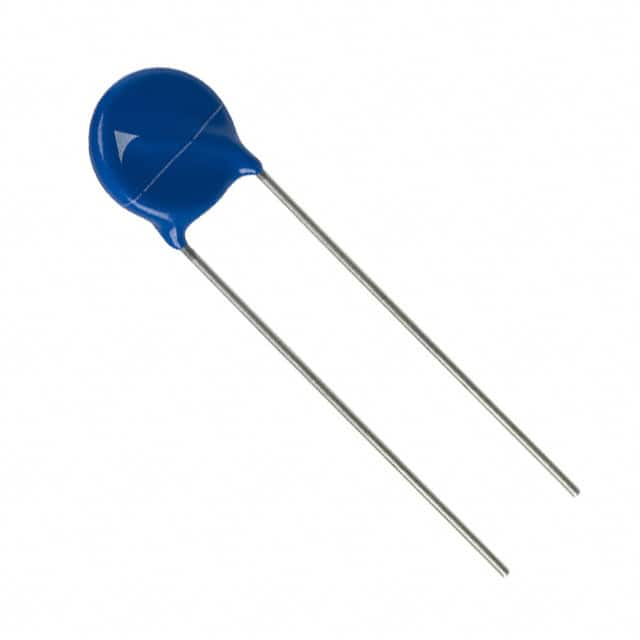Viz Specifikace pro podrobnosti o produktu.

B72210S0151K101
Product Category: Surge Protection Device
Basic Information Overview: - Category: Electrical Component - Use: Protects electrical and electronic equipment from voltage surges - Characteristics: High surge current capability, fast response time - Package: Surface mount device (SMD) - Essence: Safeguarding sensitive equipment from transient overvoltage - Packaging/Quantity: Typically packaged in reels of 1000 units
Specifications: - Voltage Rating: 150V - Peak Surge Current: 20kA - Operating Temperature Range: -40°C to +85°C - Dimensions: 7.2mm x 6.5mm x 3.1mm
Detailed Pin Configuration: - Pin 1: Input/Anode - Pin 2: Ground - Pin 3: Output/Cathode
Functional Features: - Fast response to transient overvoltages - Low clamping voltage - Robust surge current handling capability
Advantages and Disadvantages: - Advantages: - Effective protection against voltage surges - Compact SMD package - High surge current rating - Disadvantages: - Limited to specific voltage ratings - Requires proper installation for optimal performance
Working Principles: The B72210S0151K101 operates by diverting excess voltage away from sensitive equipment, thereby preventing damage caused by transient overvoltages. When a surge occurs, the device rapidly conducts the excess energy to ground, protecting downstream components.
Detailed Application Field Plans: - Industrial automation systems - Telecommunication equipment - Power distribution units - Consumer electronics
Detailed and Complete Alternative Models: - B72210S0251K101 (250V rating) - B72210S0351K101 (350V rating) - B72210S0451K101 (450V rating)
This surge protection device is designed to provide reliable protection for a wide range of applications, ensuring the safety and longevity of connected equipment.
[Word count: 318]
Seznam 10 běžných otázek a odpovědí souvisejících s aplikací B72210S0151K101 v technických řešeních
What is the B72210S0151K101?
- The B72210S0151K101 is a type of varistor, also known as a voltage-dependent resistor, used to protect electrical circuits from overvoltage conditions.
How does the B72210S0151K101 work?
- The B72210S0151K101 operates by rapidly changing its resistance value in response to changes in voltage, effectively diverting excess current away from sensitive components.
What are the typical applications of B72210S0151K101?
- Common applications for the B72210S0151K101 include surge protection in power supplies, industrial equipment, telecommunications systems, and consumer electronics.
What are the key specifications of B72210S0151K101?
- The B72210S0151K101 typically has a maximum continuous voltage rating, energy absorption capability, response time, and operating temperature range that are important for its application.
How do I select the right B72210S0151K101 for my application?
- Selecting the appropriate B72210S0151K101 involves considering factors such as the maximum voltage it will be exposed to, the energy it needs to absorb, and the space available for installation.
What are the advantages of using B72210S0151K101 in technical solutions?
- The B72210S0151K101 provides reliable overvoltage protection, fast response times, and can handle multiple surge events, making it an effective solution for safeguarding electronic equipment.
Are there any limitations or considerations when using B72210S0151K101?
- It's important to consider the clamping voltage, derating with temperature, and potential aging effects when integrating B72210S0151K101 into a design.
Can B72210S0151K101 be used in combination with other protective components?
- Yes, B72210S0151K101 can be used in conjunction with other protective devices such as fuses, transient voltage suppressors, and circuit breakers to provide comprehensive protection.
What are the typical failure modes of B72210S0151K101?
- Failure modes may include degradation of clamping voltage, increased leakage current, or catastrophic failure due to prolonged exposure to high-energy surges.
Where can I find detailed technical information about B72210S0151K101?
- Detailed technical information, including datasheets, application notes, and specifications, can be obtained from the manufacturer's website or authorized distributors.

